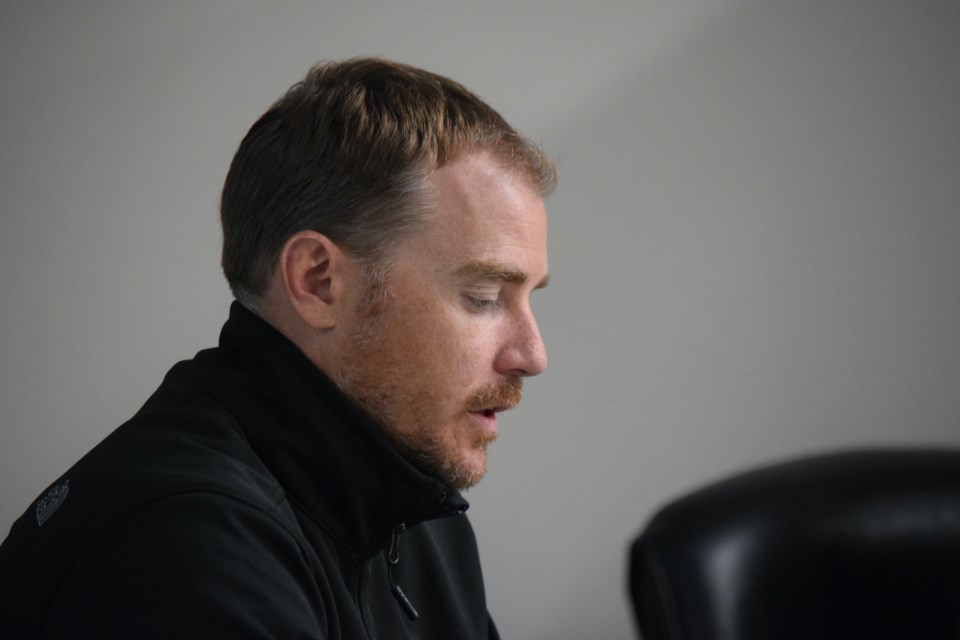BARRHEAD - The jury is still out on the health of the Thunder Lake wastewater lagoon.
However, County of Barrhead public works manager Travis Wierenga told councillors during their Oct. 17 meeting that they are one step closer to learning what they need to determine the lagoon's health.
Wierenga was at council to review an engineering report by Parkland Geo.
The municipality commissioned the report after Associated Engineering, a sounding projection in 2022.
As part of the study, Wierrenga noted Associated Engineering identified the current capacity of the lagoon, estimated sludge values and set an annual maximum volume that it could safely accommodate, adding they also made several recommendations.
Later in the meeting, councillors accepted the report for information and committed to allocating funding in the 2024 budget to continue groundwater testing and analysis.
The two most prominent, he said, were to carry out brushing along the berms to remove trees that could potentially impact the lagoon's clay liner and to install four groundwater monitoring stations.
Wierenga added that county staff carried out the brushing work last winter while the four groundwater wells, one on each side of the lagoon, were installed in June, with the first of the annual groundwater testing results coming in August.
All the wells were installed to the same 7.5-metre depth. The first test was to determine the type of subsoil surrounding the lagoon.
The south well found 1.5 metres of clay fill over a clay till.
"Which is good," Wierenga said. "That indicates proper construction and that all the organics were stripped, leaving a clay berm on top."
The well on the north side, Parkland Geo's testing indicated that there was roughly one metre of peat overtop clay mixed with peat, which Wierenga said was "somewhat expected" as the well was drilled outside the toe of the berm.
Testing from the well on the east side revealed 0.3 metres of clay fill, which he said was again to be expected given the well was well off the side of the berm. Results from the well on the west side showed 1.3 metres of clay fill over two metres of peat.
"This does raise a few concerns," Wierenga said. "Typically, you would like to strip out your peat before you stick your clay on top of it, but it may have just been the case on how the well was drilled. So, it might not be a real concern but could require further investigation."
Groundwater testing results
Parkland Geo tested the water samples from the wells for hydrocarbons, chlorides, pH, electrical conductivity (EC), total dissolved solids and total metals.
Wierenga said while non-detectable in most of the wells, the one on the east side indicated 100 parts per million (ppm) of hydrocarbon vapours, which is higher than the Alberta groundwater guideline, adding the samples also detected multiple metals in higher concentrations than the guidelines.
"But we don't know because we don't have any other base readings if the concentrations are naturally occurring," he said, adding the same could be said of the results they found in the other wells.
In the wells on the north, east and west sides, Parkland Geo found concentrations of chloride greater than the Alberta groundwater guidelines. The north and west wells also showed sodium levels higher than the Alberta groundwater guidelines, while the north well had chemical oxygen demands and Kjeldahl nitrogen and ammonia levels that were elevated compared to the other wells.
"All the monitoring wells had electrical conductivity and total dissolved solids greater than the Alberta guidelines," Wierenga said.
But he reiterated that as the county does not have any baseline readings to compare to, they are unsure what the levels mean, saying that is why Parkland Geo recommends that they continue to monitor the levels surrounding the lagoon as per Alberta Environment and Parks requirements.
"We also had [Associated Engineering] look at the results, and they recommended that we continue to monitor the situation but that there were 'no major red flags' that required immediate addressing," Wierenga said.
County manager Debbie Oyarzun concurred, saying some of the things the samples found through the groundwater testing did not have Alberta guidelines.
"So it is just a number until we see if we have any trends, good, bad or otherwise," she said.
Barry Kerton, TownandCountryToday.com



